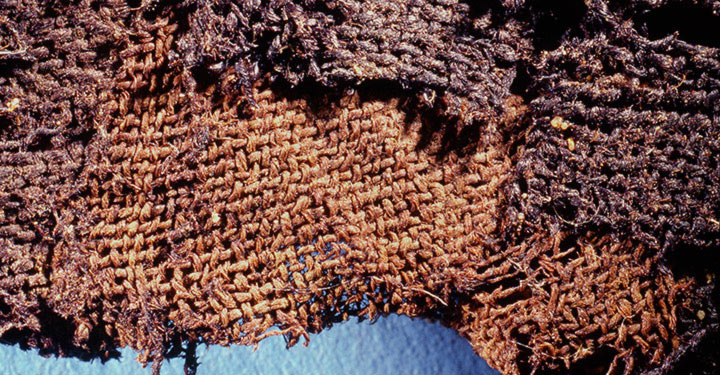Traditional theories on ancient Egyptian mummification suggest that in prehistory - the Late Neolithic and Predynastic periods between c 4500 and 3100 BC - bodies were desiccated naturally through the action of the hot, dry desert sand.
Scientific evidence for the early use of resins in artificial mummification has, until now, been limited to isolated occurrences during the late Old Kingdom (c 2200 BC). Their use became more apparent during the Middle Kingdom (c 2000-1600 BC).
However, in partnership with Macquarie University in Sydney and the University of Oxford, our researchers have identified the presence of complex embalming agents on linen funerary wrappings a lot earlier.
Linen wrappings
Dr Stephen Buckley, a research fellow in our Department of Archaeology, led the analysis. He found embalming agents in linen wrappings from bodies in securely provenanced tombs in one of the earliest recorded ancient Egyptian cemeteries at Mostagedda, in the region of Upper Egypt.
Using state-of-the-art technology at our BioArCh research facility, Dr Buckley identified a pine resin, an aromatic plant extract, a plant gum/sugar, a natural petroleum source, and a plant oil/animal fat in the funerary wrappings.
Embalming agents
Predating the earliest scientific evidence by more than a millennium, these embalming agents constitute complex, processed recipes of the same natural products, in similar proportions, as those employed at the zenith of Pharaonic mummification some 3,000 years later.
Dr Buckley said: “The antibacterial properties of some of these ingredients and the localised soft-tissue preservation that they would have afforded lead us to conclude that these represent the very beginnings of experimentation that would evolve into the mummification practice of the Pharaonic period.”
The text of this article is licensed under a Creative Commons Licence. You're free to republish it, as long as you link back to this page and credit us.





